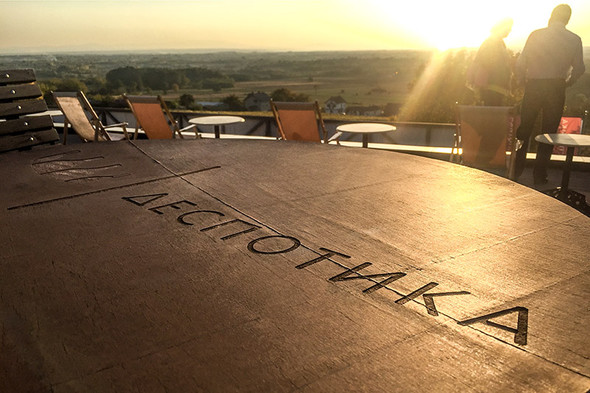We begin day 3 of our Serbian odyssey in the ancient vineyards of the Oplenac region, in Vinča, a village built on wine; in a place where there was electricity even before Belgrade. We are at the Aleksandrović winery, home of award-winning modern Trijumf wines. In the past, royal wines were made here, and Trijumf was once the leading wine of Serbia and its Royal Court, made from the best wines from the royal cellars.
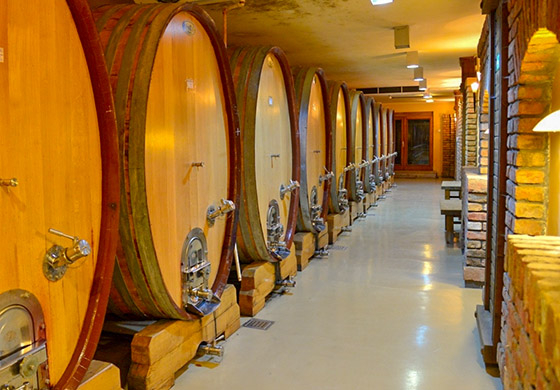
Aleksandrovic Winery by Piroska Koltai - Wine a'More Travel
The Aleksandrović family has been making wine here for more than a hundred years, in the past working closely with royal viticulturalists and cellar masters. Under the communist regime, many in the area simply cut out their vineyards and grew fruit, indeed the region is famous for its plums. Following the grim years of viticulture in communism, the family decided to restore the past winemaking traditions of the area. Beginning in 2000, they began to construct a winery which took 17 years to complete. Trijumf was their first wine in 1992 . The grandson of a former royal cellar master, a close friend of the family, who had emigrated to Canada after WWII, had heard of their endeavours and sent them the original recipe for Trijumf, enabling the royal tradition to continue.
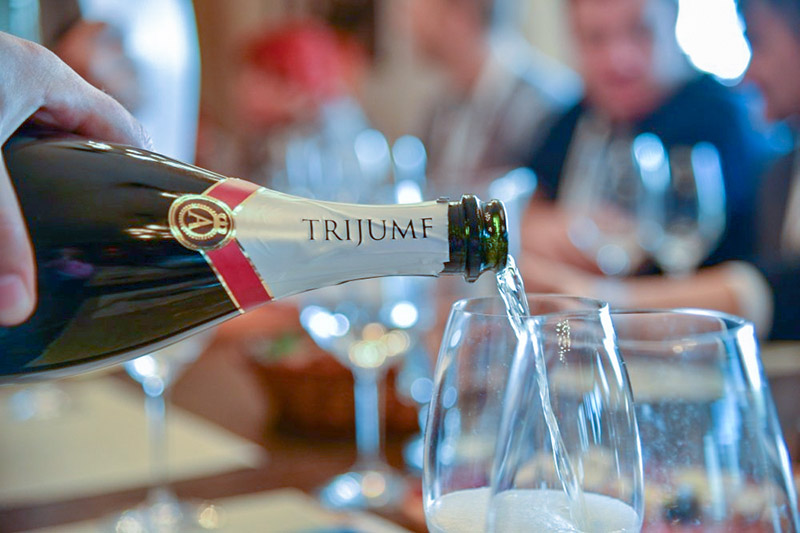
Photo: Piroska Koltai - Wine a'More Travel
The Serbian royal family is intimately connected with winemaking in Serbia, bringing international varieties here at the beginning of the twentieth century and creating the Royal Winery in Topola which we would visit later in the day.
The Aleksandrović winery has 75 hectares of vines, mostly international varieties, although they planted some Prokupac five or six years ago and are quite happy with its performance. In 2008, they were the first winery in contemporary Serbia to make traditional method sparkling wine, at first only Chardonnay, now they also make a Pinot Noir Blanc de Noirs and since 2015 a sparkling rosé. Plenty of wineries in Serbia now make traditional method sparkling, but few people in Serbia actually drink it, most likely for cost reasons, so the majority is exported. The winery is now proud to have its sparkling wines in Michelin-starred restaurants around the world, including in Copenhagen and Berlin.
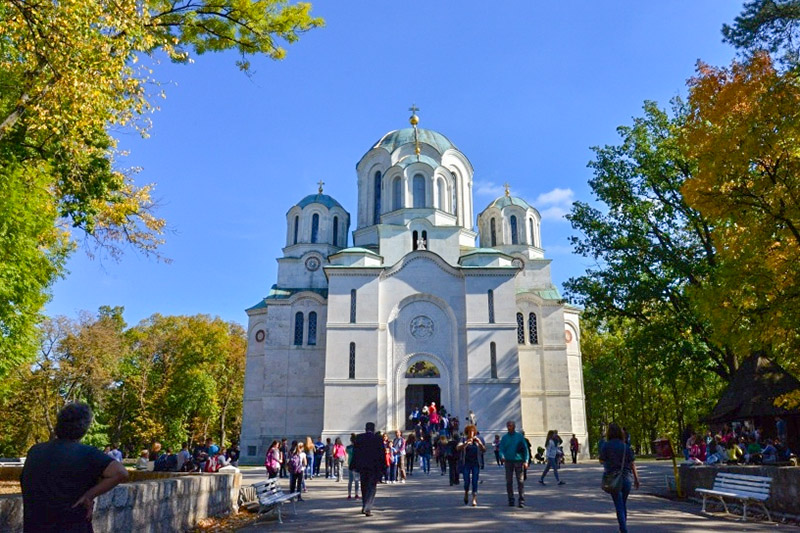
St George's Church also known as Oplenac by Piroska Koltai - Wine a'More Travel
After a brief visit to the town of Topola and the monumental white marble five-domed St Georges Church, mausoleum of the Serbian and Yugoslav royal family of Karađorđević, and simply dripping with magnificent mosaics, we tour King Peter’s modest house in front of the church where he resided while it was being constructed and admire the royal vineyards just down the hill from the church. Then we head off to visit the Royal Winery - Kraljeva Vinarija - just outside town.
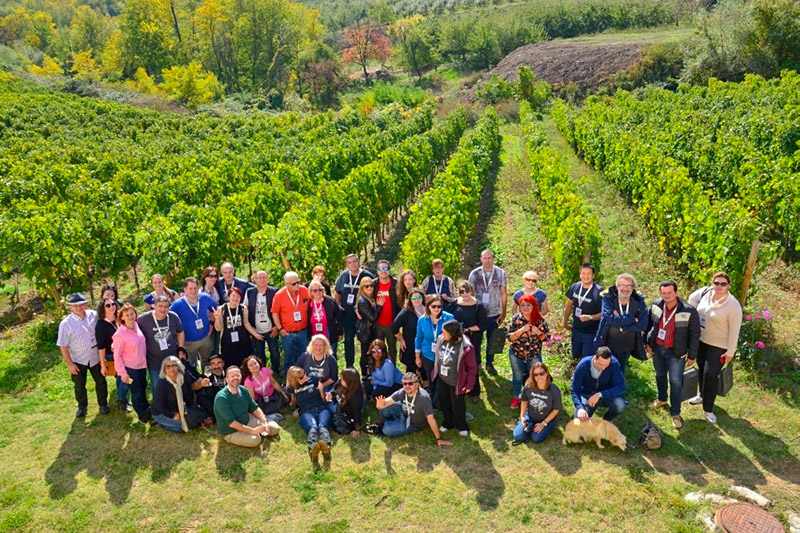
The #winelover group by Piroska Koltai - Wine a'More Travel
The winery was built in 1931, the idea of King Peter I who came back to Serbia in 1903 after 45 years in exile. Built after his death, it had a large capacity for the time – 38 hectares and 400,000 bottles per year, now only 20,000 bottles are produced from its 11 hectares. Plots of land were bought on the east side of the hill, and the winery at one time had 145 hectares of land, also producing fruit and vegetables for the family with the rest invested into endowment. They had a smaller winery before, but the capacity was too small, and this new winery was built with its two underground cellars – one for red and one for white wine. The winery boasted all the mod-cons – using gravity to transport wine between the floors and featuring a piping system which regulated the heat to 22°C and the oldest lift in the Balkans, which is still operational.
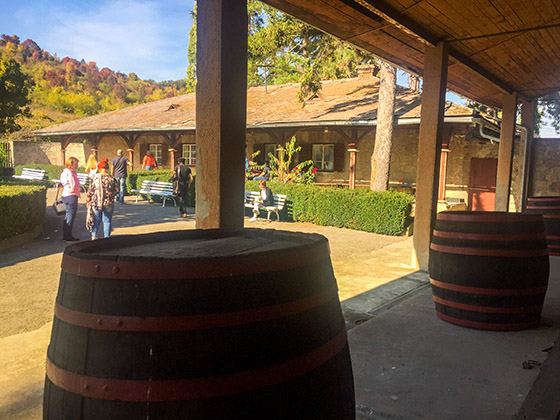
In the courtyard of the Royal Winery Photo: Daniel Ercsey
Three large barrels are proudly lined up along the wall of the winery – a wedding gift to Alexander (son of Peter) and Marie from the Serbs, Croats and Slovenes – shortly before the end of WWI, Peter had been proclaimed sovereign of the Kingdom of the Serbs, Croats and Slovenes. The largest of the three is the oldest barrel in the Balkans. Wine is no longer made here at the winery and the buildings function as a museum, housing, amongst other things 208 bottles of wine from 1931-1956, which were saved during the communist occupation, hidden within one of the large barrels down in the cellar.
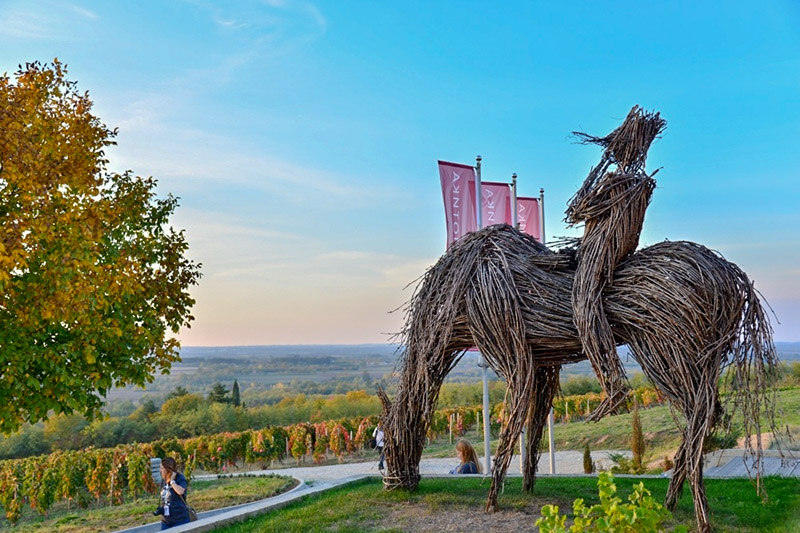
Photo: Piroska Koltai - Wine a'More Travel
The modern Despotika Winery, perched on a hill near Smederevska Palanka, overlooking the rolling hills of Šumadija, is our last port of call for the day. Greeted by a metal-wire sculpture of Marko Kraljevic, local warrior horseman known from folk tradition, the winery also houses more among its facility. The owner, Veselin Despotović, an architect, says that sculptures show chaos versus balance and control. The architect’s touch is evident throughout the winery, from its modern design, atmospheric terrace overlooking the vines and the vine roots etched into the concrete of the cellar. Veselin also celebrates Serbia’s long, rich tradition in winemaking with a museum outlining the history of Serbian wine – the equipment has changed, he says, but the principles have stayed the same.
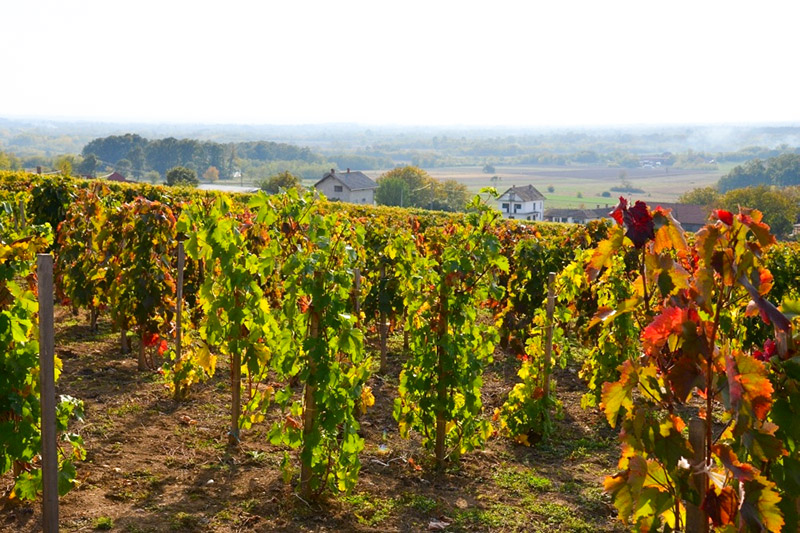
Vineyard at Despotika Winery by Piroska Koltai - Wine a'More Travel
The young winery (their first harvest was in 2011) produces eight wines from Šumadija and around, 15 hectares of mainly international varieties, but they also have some Tamjanika and Morava (a little reminiscent of Sauvignon Blanc) along with some Prokupac planted in a traditional way, i.e. bush. They try to promote the use of Serbian oak, but also have some French and Hungarian.
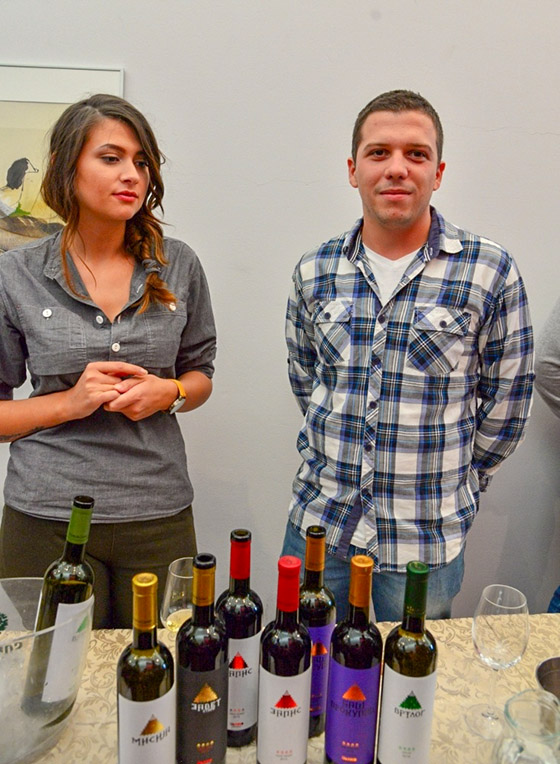
One of the guest wineries, Podrum Janko by Piroska Koltai - Wine a'More Travel
Despotika also hosted some other local wineries and their wines. The wines were mostly from international varieties, but there was also a smattering of refreshing white Tamjanika, Smederevka, Morava and Prokupac. Vinarija Virtus boasted a beautiful fruity, spicy Marselan, which proved a real talking point.
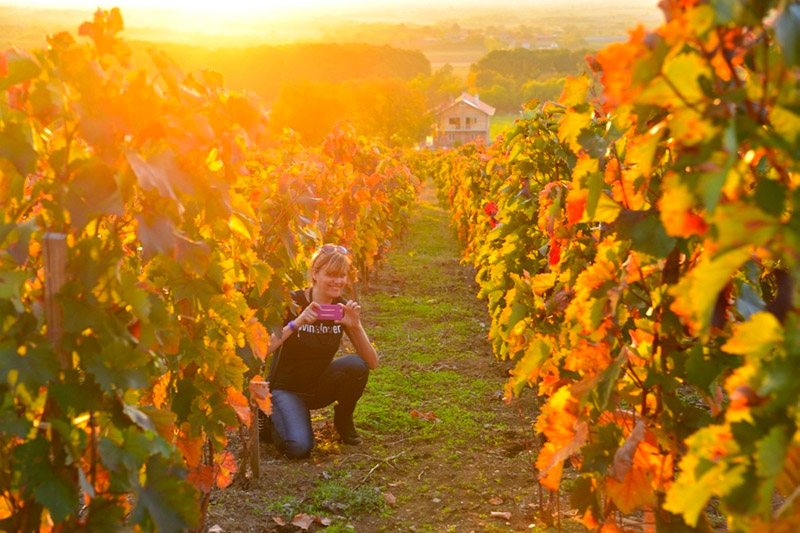
Our Georgian wine expert Sarah May in Serbia! Photo: Piroska Koltai - Wine a'More Travel
Serbia’s modern wine industry may be young, but they are certainly starting to produce results, reinventing old traditions and beginning new ones. We look forward to seeing what the next few years will bring.



